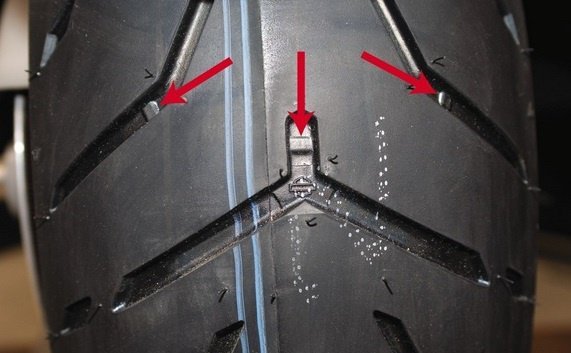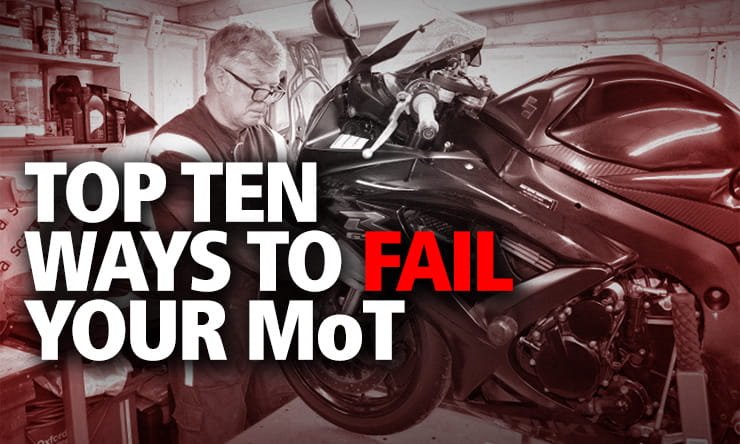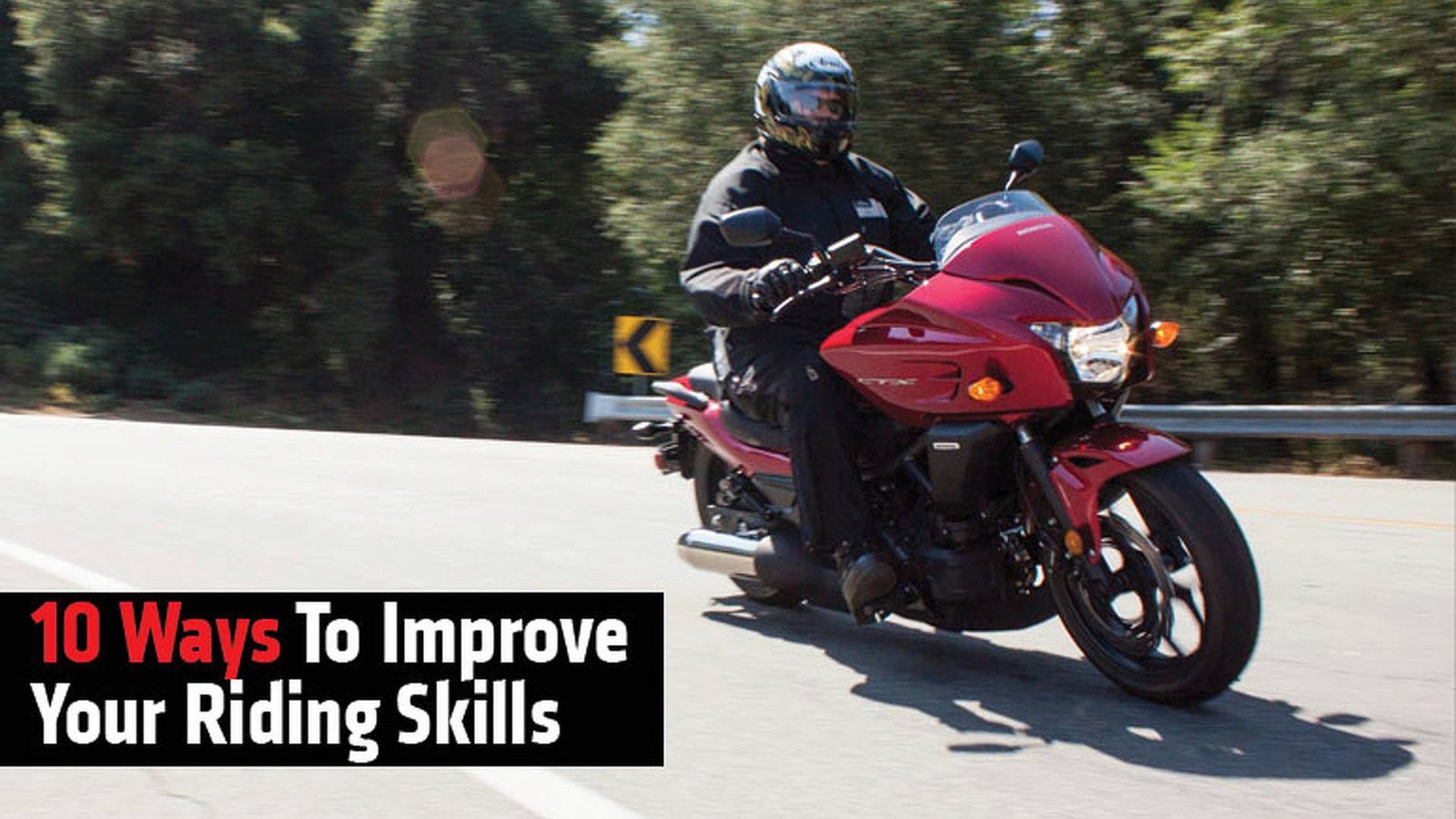Motorcycle tires typically need replacement every 5,000 to 15,000 miles, depending on factors like riding style, road conditions, and tire quality. Regular inspection for wear and tear is essential for safety. Consult your manufacturer’s guidelines and a professional mechanic for accurate advice.
Do you know how often motorcycle tires need to be replaced? Maintaining optimal motorcycle performance and safety hinges on the condition of its tires. The rubber on motorcycle tires deteriorates over time, regardless of mileage, making regular inspections is a must. Riders must monitor their tire’s tread depth, look for any signs of aging or damage, and consider the manufacturer’s recommendations.
Often, a tire’s production date, indicated by the DOT code, serves as a guide to ascertain age. Frequent riders or those who traverse challenging terrains may find themselves replacing tires closer to the 5,000-mile mark, while more casual riders could reach up to 20,000 miles before needing a change. Ultimately, vigilance in tire maintenance ensures a smoother and safer ride.

Credit: m.youtube.com
Motorcycle Tire Lifespan
The life of a motorcycle tire depends on many factors. This includes how often the bike is ridden, the rider’s style, and the tire’s quality. Proper assessment of tire lifespan ensures a smooth and safe ride.
Mileage As A Benchmark
One way to gauge tire life is by looking at mileage. Most tires have a mileage estimate from the manufacturer. These numbers offer a general guideline, but real-world factors can alter them significantly. Riders should perform regular checks for wear and tear. Here’s what to keep an eye on:
- Tread depth: Use a tread depth gauge to measure.
- Overall condition: Look for cracks, cuts, or bulges.
- Wear indicators: Check if they’re flush with the tread surface.
Age-related Deterioration
Tires age, even without frequent use. The rubber compounds break down over time, losing elasticity and grip. This process can be sped up by exposure to sunlight, heat, and harsh chemicals. Most manufacturers recommend replacing tires every 5 years, regardless of mileage. Check the tires if:
| Check for | Details |
|---|---|
| Dry rot: | Visible cracks on the tire surface. |
| Discoloration: | Changes in tire color, indicating degradation. |
| Brittleness: | The rubber feels hard or brittle to the touch. |
Remember to check the tire production date. It’s on the sidewall, listed as a four-digit code. The first two digits are the week of manufacture, and the last two are the year.
Warning Signs Of Worn Tires
Riding on worn tires is a risk no motorcyclist should take. Recognizing the warning signs of tire wear is crucial for safety and optimal performance. Let’s examine the alerts that it’s time for a tire change.
Tread Wear Indicators
Tread wear indicators (TWI) are built into tires. These small raised bars in the grooves of your tire tread signal when the thread has worn down to a critical level. When the tire tread is even with the TWI, it’s promptly time to replace your tires.
You can spot these indicators in the grooves of your tire. They usually run perpendicular to the tread pattern.
Visual Inspection Clues
- Cracks: Check for small cracks in the rubber, especially where the tread meets the sidewall.
- Bulges or Blisters: These are raised areas that indicate a weak spot in the tire that could lead to a blowout.
- Uneven Tread Wear: Look for any unusual patterns of wear which might suggest alignment or suspension issues.
- Age: Even with ample tread, a tire more than five years old may need replacement due to rubber deterioration.
Handling And Performance Issues
Sudden or gradual changes in handling can be a red flag. Pay attention to these signs:
- Loss of traction during acceleration, braking, or cornering could indicate worn tread.
- Vibration or wobbling suggests imbalances, flat spots, or internal damage to the tire.
Address these concerns with a professional mechanic promptly to ensure a safe ride.
Factors Influencing Tire Wear
Maintaining your motorcycle tires is essential for safety and performance. Just like the soles of shoes wear out, motorcycle tires need regular replacement, but how often depends on several factors. Let’s dive into what influences tire wear, ensuring that you’re never caught off guard by worn-out treads.
Impact of Riding Style
Riding style significantly affects tire longevity. Aggressive acceleration, hard braking, and high-speed turns lead to quicker wear. Casual riders who prefer gentle cruises may find their tires lasting longer.
- Quick starts wear out the rear tire faster.
- Hard stops put extra stress on the front tire.
- High-speed cornering can quickly degrade the tire’s sides.
Load And Tire Pressure Effects
Tire pressure and load dramatically influence wear rates. Maintaining the recommended tire pressure ensures optimal contact with the road and even wear. Overloading your bike or underinflating tires shortens their life.
| Condition | Effect |
|---|---|
| Correct Pressure | Even wear |
| Low Pressure | Faster wear, poor handling |
| High Pressure | Reduced grip, uneven wear |
| Excess Load | Increased wear, higher risk of blowouts |
Climate And Road Conditions
Weather and road surfaces play a major role in how quickly tires deteriorate. Extremes in temperature and rough, uneven terrain challenge the tire’s integrity and accelerate wear.
- Hot climates can soften tires, leading to quicker wear.
- Cold conditions may harden tires, increasing risk of cracks.
- Rough surfaces cause cuts and quicker tread reduction.
Proper Tire Maintenance Routines
Tire maintenance is key to extending the life of motorcycle tires and ensuring safety on the road. Consistent care not only improves performance but also reduces the likelihood of tire failure. Engaging in a few regular maintenance routines can save time and expenses associated with premature tire replacement. Let’s dive into what every rider should know.
Regular Pressure Checks
Maintaining optimal tire pressure is vital point for peak performance. Incorrect pressure can lead to irregular wear, reduced grip, and poor fuel economy.
- Check tire pressure every two weeks and before long rides.
- Use a reliable pressure gauge for accurate readings.
- Adjust pressure as per manufacturer guidelines.
Balancing And Rotation
Proper tire balance enhances stability and ensures even tread wear. Regular rotation allows tires to wear uniformly.
- Balance motorcycle tires after installation and periodically thereafter.
- Consider tire rotation every 5,000 miles or as suggested by the tire manufacturer.
Storage And Cleaning Practices
When not in use, store tires correctly to prevent damage and extend their usability.
| Storage | Cleaning |
|---|---|
| Keep in a cool, dry place away from direct sunlight. | Clean with mild soap and water, avoiding harsh chemicals. |
| Avoid contact with oil or gasoline. | Inspect for abrasions or foreign objects post-cleaning. |
When To Consult A Professional
Like the shoes on your feet, tires are the point of connection to the road. Over time, they wear down and need replacement. But it isn’t just about time and wear; safety and performance are key considerations.
Riders may question their ability to judge tire condition. Recognizing the signs for professional evaluation can save both time and lives.
Professional Inspection
Tires are complex. Subtle signs of wear or damage often go unnoticed. A professional inspection ensures a thorough assessment. Here are scenarios when an expert should take a look:
- Tread wear indicator bars: These are visible and signal the need for a check-up.
- Uneven wear patterns could suggest alignment issues.
- Cracks or cuts in the sidewall are serious and warrant immediate attention.
- Any punctures or damage post-ride should prompt a professional review.
Choosing The Right Replacement
The choice of new tires affects your ride’s handling and safety. Experts can match tire types to riding styles and conditions. Criteria to consider:
| Tire Aspect | Consideration |
|---|---|
| Size | Manufacturer specs are a starting point. |
| Type | Street, touring, off-road, or sport. |
| Compound | Soft for grip, hard for longevity. |
| Tread pattern | Water dispersion and grip factor in. |
Expert Installation
The exactness of fitting new tires is a task for the experienced. Proper mounting, balancing, and alignment affect performance. Professionals guarantee:
- Correct removal of old tires, preventing damage to wheels.
- Balancing tires, vital for a smooth ride and even wear.
- Precise torque on lug nuts; crucial for rider safety.
Entrust tire replacement to a professional to maintain top motorcycle condition.

Credit: www.quora.com
Consequences Of Negligence
Replacing motorcycle tires is not just maintenance; it’s an important safety practice. Tire condition greatly affects ride quality and reaction in emergencies. Ignoring tire wear can lead to dire outcomes. This section explores key risks related to worn-out motorcycle tires.
Safety Risks Of Overworn Tires
Bald or overworn tires are dangerous. They compromise grip on the road. They can cause skidding, especially under wet or slick conditions. Long stopping distances and reduced handling can end in accidents. Riders must check their tires regularly and know the signs of excessive wear.
- Reduced traction on wet and dry surfaces
- Inadequate braking performance
- Higher risk of blowouts increasing accident likelihood
Legal And Insurance Implications
Riding with bald tires is not just unsafe, it’s often illegal. Traffic laws mandate tire tread depth standards. Non-compliance can result in fines or legal charges. Insurance claims could be denied if an accident is linked to neglected tire maintenance.
- Possible traffic violations and fines
- Insurance claims may be invalidated
- Legal consequences following an accident
Impact On Motorcycle Longevity
Well-maintained tires extend a motorcycle’s life. Worn tires strain the engine and suspension components. Regular tire replacement prevents undue wear on other parts. This ensures performance and saves money in the long run.
- Preserves engine and suspension systems
- Prevents expensive repairs on related parts
- Ensures optimal fuel efficiency and performance
FAQ
Do Bike Tyres Expire?
Tires can degrade over time, even if they are not used. Most tire manufacturers recommend replacing tires every 6-10 years, regardless of tread depth. Factors such as exposure to the elements and storage conditions can affect the tire’s lifespan.
How Long Do Motorcycle Tyres Last?
The lifespan of a motorcycle tire depends on various factors including the type of tire, riding style, road conditions, and maintenance. Generally, motorcycle tires can last anywhere from 5,000 to 15,000 miles.
How Do I Know When My Motorcycle Tires Need Replacing?
It’s essential to regularly inspect your motorcycle tires for signs of wear. You should replace the tires if you notice uneven tread wear, cracks, bulges, or if the tread depth is at or below the minimum recommended level (usually 1/32 inch).
How Many Miles Do You Need To Wear New Motorcycle Tyres?
The mileage a motorcycle tire lasts can vary based on different factors such as riding style, road conditions, and tire specifications. On average, high-quality motorcycle tires can last anywhere from 5,000 to 20,000 miles.
Should You Change Both Motorcycle Tyres At The Same Time?
It is best to change both motorcycle tires at the same time, even if only one tire is worn out or damaged. This ensures balanced handling and optimal performance. Additionally, it can prevent potential safety issues that may arise from having mismatched tires.
What’s The Average Lifespan Of Motorcycle Tires?
Tire lifespan varies with usage, but typically, motorcycle tires last for 12,000 to 15,000 miles. Frequent heavy usage or aggressive riding styles can shorten this range. Always monitor your tires for signs of wear and damage.
How To Tell If Motorcycle Tires Are Worn Out?
Check the tread depth indicator on your motorcycle tires, often referred to as wear bars. If the tread is level with these bars, it’s time to replace your tires. Also, look for cracks, bulges, or signs of dry rot.
What Factors Affect Motorcycle Tire Longevity?
Several factors affect how long motorcycle tires last, including riding style, tire type, weight carried, and maintenance. Aggressive riding and heavy loads accelerate wear, while proper inflation and storage can extend tire life.
Can Weather Impact Motorcycle Tire Lifespan?
Yes, weather can influence tire lifespan. Extreme temperatures, direct sunlight, and prolonged exposure to the elements can degrade the rubber compounds, leading to faster wear and necessitating earlier replacement.
Bottom Line
So, how often do motorcycle tires need to be replaced? Regular tire checks keep your ride smooth and safe. Aim to replace motorcycle tires every five years, or sooner if tread wear is suggested. Proper maintenance ensures longevity, so always follow manufacturer guidelines for optimal performance. Stay vigilant on the road by keeping tires in top condition for every journey.




Leave a Reply